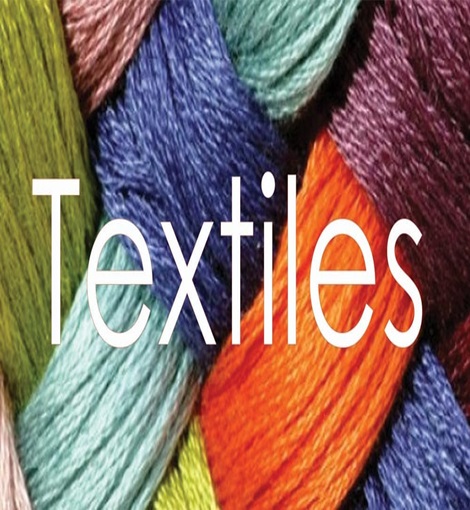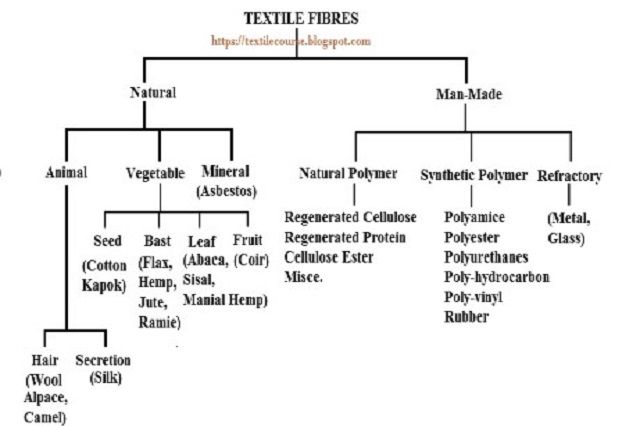Introduction To Textiles

Introduction to Textiles
- Kapada or clothing or fabrics” is one of the three basic needs of mankind , along with Roti, and Makkan .
- Aborigines were using bark of trees and leather of animals for protecting themselves from extreme cold and heat in the nature.
- Climatic and geographical conditions (temperature to be specific based on latitude and altitude of the region) as well as social, Cultural and Religious practices have influence on the use and production of textile
- Science & technology have profound impact on the production of textiles to weaving by power loom and even nonwovens.
- Textiles mark one of the most fascinating features in the evolution of human civilisation.
- Form an integral part of rituals, festivals, culture, and tradition.
Evolution of Textiles
Fabrics is woven by interlacing two sets of fibers, warp (tana) along the length with weft (bana) along the width.
Till industrial revolution, fabrics was being woven only by handloom.
The textiles industry underwent revolutionary changes by weaving in machine operated looms, processing and garmenting with fashion.
Modern textiles industry has seven major components –
- Fibre -Natural and Man-made
- Yarn by spinning fibre
- Fabrics by weaving yarn either plain or with designs
- Processing fabrics with dyes and chemicals – Natural and Synthetic
- Apparel and garments stitched from fabrics
- Non-woven and
- Technical textiles

Fibres type
- Spun: Cotton, Jute, Flax, etc. (from short staple length fibers)
- Filament: (i) Natural – Silk, Tassar, etc.
(ii)Manmade (Synthetic) – Polyester, Nylon, Rayon, etc. - Textured: A continuous filament yarn, processed to introduce durable crimps, coils, loops or other fine distortions.
- Fancy Yarn
Source of natural fibres
From Animals-
- Animal hair fibers consist of keratin, a protein formed by repeating units of amino acids.
- Presence of nitrogen makes burning of the fiber slow with emission of a pungent smell.
- Examples: Wool from sheep and Silk by reeling cocoons of silkworms
- Consist of carbohydrates , which burn rapidly without any smell.
- Seed hair fibers like cotton
- Bast of stem like Jute and hemp
- Miscellaneous fibers.
Cotton
- Cotton influenced the destiny of humankind like Perhaps no other natural product
- It has clothed nations, enslaved men and women, monopolized labor, and given direction to entire industries.
- First historical mention of cotton in the writings of Herodotus. In 484 B.C., he described trees with fleece growing in them in India.
- Use of cotton in India date back to 3000 B.C. or earlier.
- Cotton spread by trade to the Middle East, particularly Egypt, and later, in7-8thcenturies brought to Spain by the Moors.
- New World explorers found cotton fabrics being manufactured in Peru, Mexico, and what is now the southwestern United States.
- Carbon 14 tests have dated the use of cotton in Peru as far back as 2500 B.C.
- Europeans first planted cotton in the New World in Virginia, using seeds from the West Indies. The need to harvest cotton when the weather is perfectly dry meant at first that the European colonists had to spend long days working in the hot sun. They eventually circumvented their dislike for this labor by importing slaves to do the work for them.
Silk
- A continuous protein filament, spun by the silkworm to form its cocoon.
- Mulberry silkworm (Bombyx mori), which feeds on the mulberry leaf (Morus alba) is the major silk from commercial production point.
- Production of Silk originated in China about 4,000 years ago. The Chinese used silk for clothing, wall hangings, paintings, religious ornamentation, interior decoration, and to maintain religious records.
- Knowledge of the silkworm passed from China to Japan through Korea and played amajor role in the initial phase of its transformation as a global power.
- Importance of silk in international trade is evident form the fact that the most ancient international trading route is known as “Silk Route”. Silk reigned the global women’s hosiery market till the World War II, after which it was overtaken by manmade synthetic fiber nylon.
- India produces four types of silk, Tassar, Eri, Muga, and Mulberry,out of which first three are reared outdoor. Muga rearing is typical to the northeast. As Eri cocoon can not be reeled, it is spun without killing the worm and is known as “Ahimsa” (non-violent) silk.
- Mulberry yarn is the main source of silk yarn for handloom weaving which is supplemented by tassar produced in the tropical forests of Odisha, Madhya Pradesh, Jharkhand and Telangana .
Man-made fibres (MMF)
Are produced on the commercial scale by machines Falls under two broad categories , namely
- Synthetic
Synthetic fibers are produced from crude oil.
- produced polyester, acrylic and polypropylene
- Cellulosic
Cellulosic fibers are produced from wood pulp.
- produced viscose fibre, modal, etc.
Indian textile industry
- Has enormous social and economic significance
- Employment in
- Unorganised, informal rural and cottage
- Handloom, Khadi, Jute , silk wool segments for highly skilled weavers and unskilled workers
- Next to agriculture in rural area
- Offers direct employment to over 4.3 million
- Organised, Formal
- Mill, Power loom, Spinning, Weaving, Processing, Apparel & Garments
- 2,500 textile weaving factories and 4,135 textile finishing factories
- Wealth and foreign exchange
- Exports (US$ 55 billion )
- India was ranked as the fourth most promising market for apparel retailers
- Cotton production- second
- Silk production – second
- Jute production- First ( 63% of the global Jute)
- Textile machine manufacturing- second in the world
